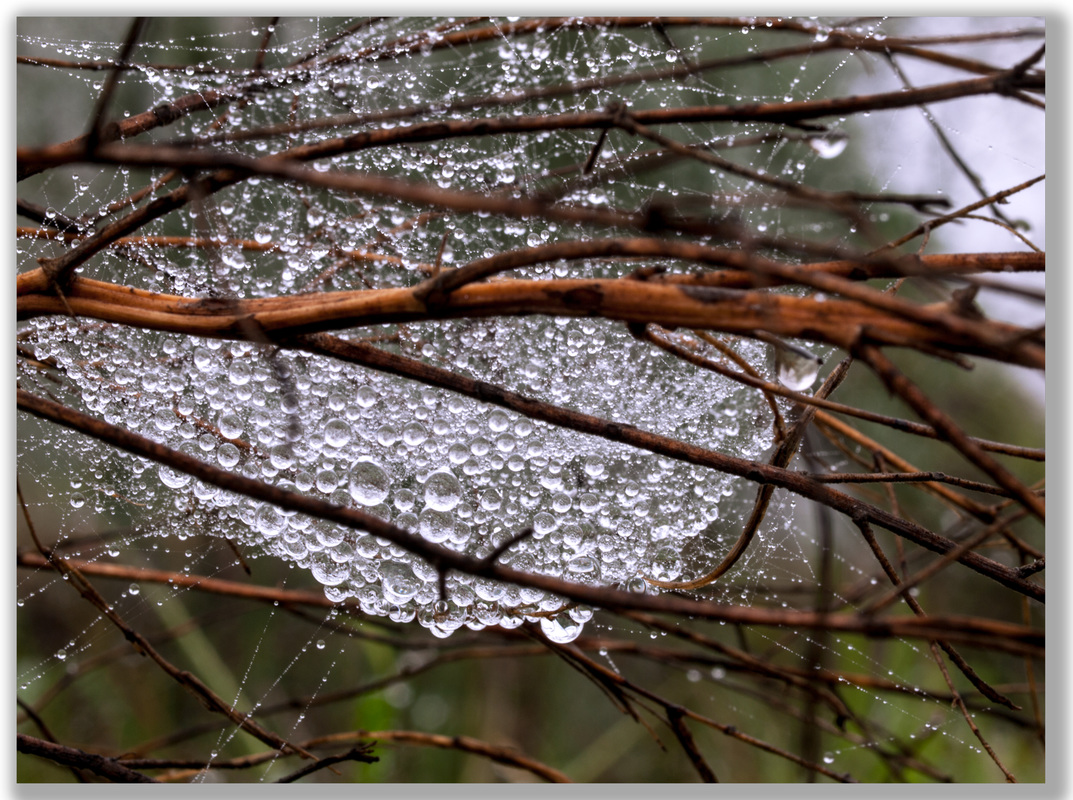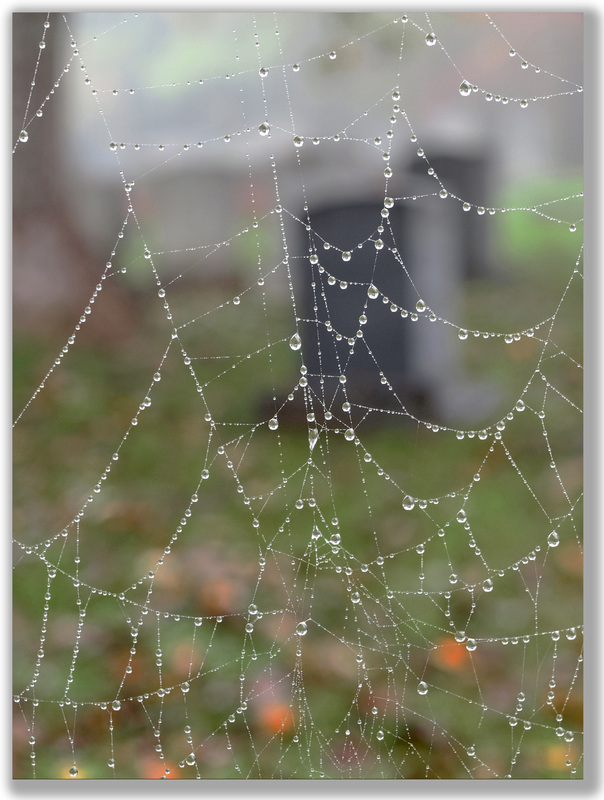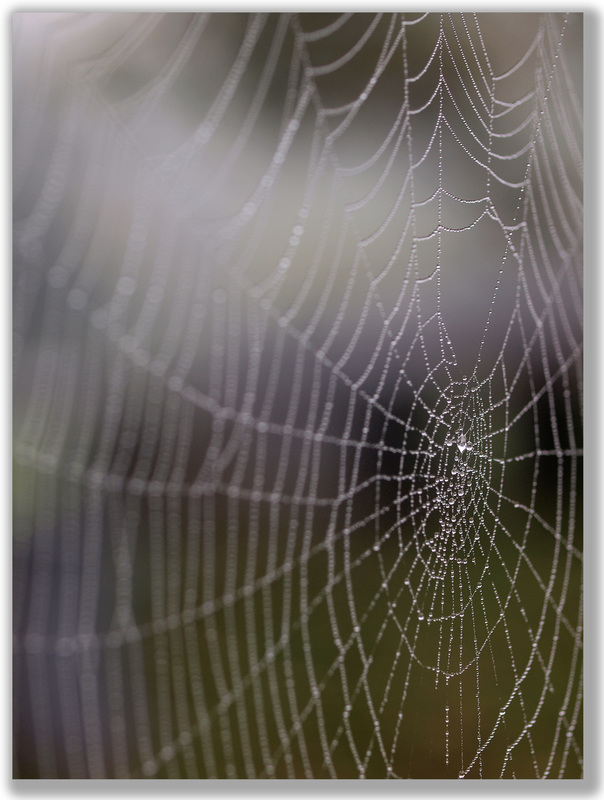|
Chris Fedderson — MacroFine Musings ~~~~~~~~~~~~~~~~~~~~~~~~~~~~~~~~~~ “ ‘Will you walk into my parlour?’ said the Spider to the photographer…” [ed. lic.] --Mary Howitt 1829 It’s been raining – no surprise here, it’s April and you know the adage: April Showers bring May Flowers. Even though we know the promised benefits, sometimes April seems to drag on and on while we wait to photograph the beautiful May Flowers. So, make good use of it. With all this rain comes an opportunity to look for new, challenging subjects to photograph. And I know just the thing! Spider webs! Eeewwww! No, Really. Even if actual spiders aren’t your thing, their webs can make some intriguing Macro shots. Webs holding raindrops, or heavy with dew, can be fabulous subjects — they almost define your Hook for you. But they can be challenging subjects. Webs pose a whole host of fun challenges: movement, focal point, resolution, background, depth of field, refracted images, etc. But, overcoming these hurtles is all the fun! These engineering marvels have amazing strength and construction. “Markus Buehler, an associate professor of civil and environmental engineering (CEE) at MIT, has previously analyzed the complex, hierarchical structure of spider silk and its amazing strength — on a pound-for-pound basis, it’s stronger than steel.” … But, I digress… Your first challenge — chronologically, and the hardest one for me — is that you can’t get up at the crack of noon and wander out into the yard in your jammies thinking you’re going to snap a masterpiece before breakfast… er… lunch. You must plan ahead and choose your photo shoot location and timing with care. Choose a site that is home to a lot of spiders: a wetland, a remote meadow, any place that is also home to a lot of insects in general. Plan your timing to be early… very early… in the morning. You’ll also need a morning that follows a light night rain or a misty or foggy night. You need the water drops, after all. An added bonus may be that this morning will be overcast or foggy, providing an even, diffused light. Perfect! You will also need it to be beyond calm. You’ll need it to be windless. Just the fact of very early morning will help with this. Pack your Macro lens and your tripod. Don’t neglect the tripod; you need to be able to eliminate as much movement as possible. When you’re all set up and ready to shoot, remember that it takes only about three air molecules to move a web. Any wind you generate with breathing, body movements, and even the convection currents from your body heat, can jiggle your web. So, now you’re out in the field, scouting for a subject web. But not just any web. You want one that is pristine — or as pristine as it possible given that bugs have been crashing into it all night. You want a great background, and maybe some ancillary objects in the frame that will add to your image’s message. Maybe diffused color areas or a suggestion of something behind that adds emotion. Maybe the spider is in the shot. That could be a great message/hook. …Or not… You found it! Your National Geographic masterpiece subject. Carefully get as close as you can; set your tripod, being sure to not move the web thereby dislodging its watery cargo or breaking its structure. Fill your viewfinder with it. Consider your view angle, the direction of the lighting, the background, any ancillary objections within the frame, the presence — or not — of the spider, the emotional clarity and successful communication of your message, and anything else affecting your Artistic Statement. Whether you shoot for a very narrow depth of field or a very deep focused range, is entirely up to you — and your message. Either way, set your shutter speed to be as fast as possible while balancing it with the rest of the techy things, e.g., aperture, ISO, exposure compensation, desired amount of over- or under-exposure. This fast shutter speed will help to overcome any unavoidable web movement. And just to complicate the whole deal… try using a flash. You may be able to get a lit and focused web while all else behind is vastly under-exposed and dark. Could be dramatic. Enjoy!
Thank You for visiting, — Chris P.s. How did it go for you? Did the early morning kill you? It did me! Have you tried various depths of field? Was the spider in your shot? What about using flash? Tell us what unusual things you tried on your photo shoot — we’d love to try them.
0 Comments
Leave a Reply. |
Categories
All
About Chris
I am a Virginia-based photographer and gather my images while hiking in parks and natural areas here at home and in the locations I travel to. I also love to visit arboretums and botanic gardens to find unusual and exotic subjects. Archives
March 2017
|



 RSS Feed
RSS Feed
